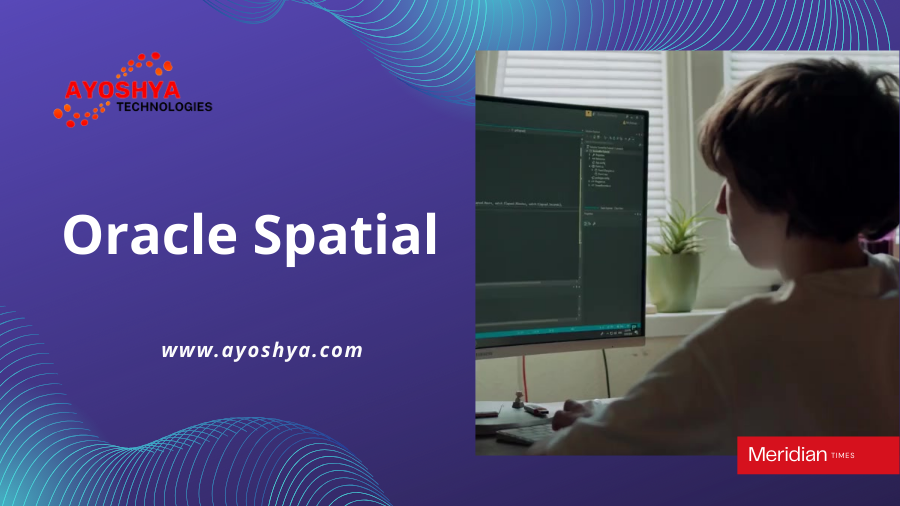Oracle Spatial: Navigating the World of Spatial Data Management
Introduction
In the era of data-driven decision-making, the importance of spatial data cannot be overstated. Oracle Spatial emerges as a powerhouse in spatial data management, providing a robust framework for storing, analyzing, and visualizing geospatial information. This article is your compass through the landscape of Oracle Spatial, unraveling its features, applications, and the transformative impact it has on diverse industries.
Understanding Oracle Spatial
Oracle Spatial is an extension of the Oracle Database designed explicitly for handling spatial data. It equips organizations with the tools needed to manage geographic and location-based information seamlessly within the database. From simple point data to complex geographical features, It can handle a wide array of spatial data types.
Key Components
- Spatial Data Types: Oracle Spatial supports a variety of spatial data types, including points, lines, polygons, and more, allowing for the representation of diverse geographical features.
- Spatial Indexing: Efficiently manage and retrieve spatial data through specialized spatial indexing techniques.
- Geospatial Analysis Functions: Perform complex geospatial analyses, such as proximity searches, overlay operations, and spatial joins.
- Integration with Oracle Database: Seamlessly integrate spatial data into existing Oracle databases, ensuring a unified and comprehensive data management solution.
Benefits of Oracle Spatial
- Spatial Intelligence: Gain insights by combining traditional data with location-based information, fostering spatial intelligence.
- Data Integration: Integrate spatial data with business data for a holistic view of operations.
- Decision Support: Leverage spatial analyses to support informed decision-making, from site selection to resource allocation.
Real-world Applications
Oracle Spatial finds applications across diverse industries:
- Urban Planning: Assist city planners in optimizing land use, infrastructure development, and emergency response planning.
- Logistics and Transportation: Enhance route optimization, tracking, and fleet management through spatial data.
- Natural Resource Management: Aid in the sustainable management of natural resources through spatial analysis.
- Telecommunications: Optimize network coverage and plan for infrastructure expansion using spatial insights.
Integration Capabilities
It seamlessly integrates with various Oracle technologies, extending spatial capabilities to applications, middleware, and business intelligence tools. This integration ensures that spatial data becomes an integral part of an organization’s data ecosystem.
Usage Scenarios
- Geocoding and Address Matching:
- Utilize Oracle Spatial for accurate geocoding and address matching, facilitating location-based services.
- Network Analysis:
- Optimize network design, whether for transportation routes, utility networks, or telecommunications infrastructure.
- Environmental Modeling:
- Model and analyze environmental factors, such as flood risk, air quality, and biodiversity.
- Retail Site Selection:
- Aid in strategic retail site selection by considering factors like foot traffic, demographics, and competitor locations.
Advanced Functionalities
- 3D Spatial Data Handling:
- Extend spatial capabilities to three dimensions, allowing for the management and analysis of 3D spatial data.
- Raster Data Support:
- Handle raster data for applications such as satellite imagery, aerial photography, and terrain models.
- Geospatial Web Services:
- Publish and consume geospatial web services, enabling the sharing of spatial data across applications and platforms.
Oracle Spatial vs. Other GIS Solutions
In comparison to standalone Geographic Information System (GIS) solutions, It offers the advantage of seamless integration with the Oracle Database. This integration ensures that spatial data is treated as an integral part of an organization’s overall data strategy, leading to improved data consistency and accessibility.
Implementation Best Practices
For organizations considering the implementation of Oracle Spatial:
- Define Clear Objectives: Clearly define spatial data management objectives aligned with organizational goals.
- Data Quality Assurance: Ensure data quality through thorough validation and cleansing processes.
- User Training: Provide training to users to maximize the benefits of Spatial in their specific roles.
Security Measures
- Access Control:
- Implement access controls to restrict users’ access to specific spatial datasets based on roles and responsibilities.
- Encryption:
- Encrypt spatial data to ensure the confidentiality and integrity of sensitive location-based information.
User Experience and Interface
Integrated into the Oracle Database, provides a familiar and user-friendly interface for database administrators, analysts, and application developers. Its seamless integration ensures that spatial data management becomes an integral part of day-to-day database operations.
Customization Options
Customization in Oracle Spatial involves tailoring spatial data models and analyses to meet specific organizational requirements. This includes defining custom spatial data types, creating specialized spatial indices, and developing custom geospatial applications.
Future Trends and Innovations
As the demand for spatial intelligence continues to grow, Oracle Spatial is expected to evolve. Anticipated trends include enhanced support for real-time spatial analytics, increased integration with cloud-based platforms, and advancements in 3D and augmented reality spatial applications.
User Testimonials
Organizations share their experiences with Oracle Spatial, emphasizing its role in improving decision-making, enhancing data visualization, and fostering innovation through spatial intelligence.
Challenges and Solutions
While Oracle Spatial offers immense capabilities, organizations may encounter challenges during implementation. This section addresses common challenges and provides effective solutions to ensure a successful spatial data management strategy.
Frequently Asked Questions (FAQs)
- Is Oracle Spatial suitable for small businesses?
- Yes, It can scale to meet the needs of small businesses while providing robust spatial data management capabilities.
- What types of spatial data can Oracle Spatial handle?
- It supports a wide range of spatial data types, including points, lines, polygons, and 3D geometries.
- Can Oracle Spatial integrate with other GIS solutions?
- Yes, It can integrate with other GIS solutions through standards-based interoperability.
- Is it suitable for real-time spatial analytics?
- Yes, It offers capabilities for real-time spatial analytics, making it suitable for applications requiring timely location-based insights.
- Does it support mobile applications?
- Yes, It can support mobile applications through its integration with Oracle Database and application development tools.
Conclusion
In conclusion, Oracle Spatial emerges as a cornerstone in the realm of spatial data management, empowering organizations to unlock the potential of location-based information. From urban planning to environmental modeling, It provides the tools needed to navigate and harness the power of spatial intelligence in the data-driven world.
You may be interested in:
WHAT DOES AN ORACLE TECHNICAL CONSULTANT DO?



